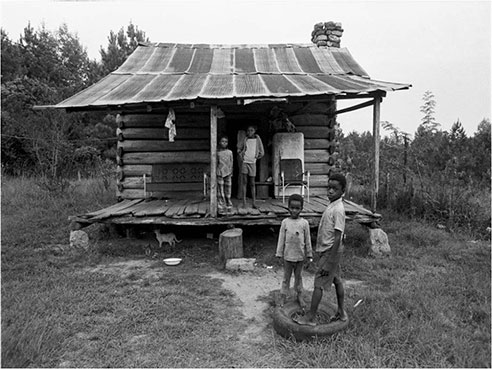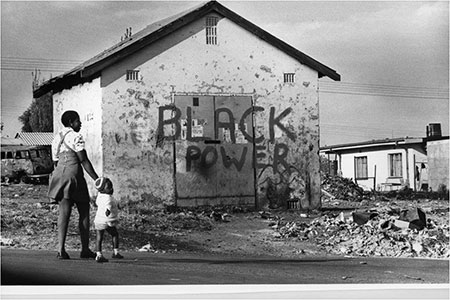 Spider Martin, Welcome to the Colored Section: Separate Not Equal, Selma, 1965, © Spider MartinIn commemoration of the 50th anniversary of the Voting Rights Act, the City of Birmingham, in collaboration with the University of Alabama at Birmingham College of Arts and Sciences’ Abroms-Engel Institute for the Visual Arts, presents “The Freedom Exhibition: Two Countries One Struggle.”
Spider Martin, Welcome to the Colored Section: Separate Not Equal, Selma, 1965, © Spider MartinIn commemoration of the 50th anniversary of the Voting Rights Act, the City of Birmingham, in collaboration with the University of Alabama at Birmingham College of Arts and Sciences’ Abroms-Engel Institute for the Visual Arts, presents “The Freedom Exhibition: Two Countries One Struggle.”
The exhibition focuses on the comparative civil rights photography of Spider Martin and Peter Magubane, and explores their respective images of American segregation and South African apartheid. Fifty photographs from each photographer are included in the exhibition.
“The Freedom Exhibition” will open to the public with a free reception from 6-8 p.m. Friday, June 5, at the Abroms-Engel Institute for the Visual Arts, 1221 10th Ave. South. The exhibition is on view from June 5-Aug. 8. Admission to AEIVA is always free. AEIVA is open to the public 10 a.m.-6 p.m. Monday-Friday and 12-6 p.m. Saturday and is closed Sundays and holidays. Call 205-975-6436 or visit AEIVA online.
“The Freedom Exhibition” is sponsored by Mayor William A. Bell Sr. and the City of Birmingham and is curated by Renee Kemp-Rotan, Mayor’s Office of Special Projects. The exhibition is expected to travel after its initial showing at UAB’s AEIVA.
This exhibition comes at the end of the 50th anniversary of the 1963 Birmingham Civil Rights campaign and has been more than a year in the making. It celebrates the foot soldiers of Selma, Alabama, who crossed the Edmund Pettus Bridge for voting rights. It also compares segregation in America with apartheid in South Africa. Together, these 100 works will offer viewers the opportunity to appreciate photography as a highly interpretive device that serves as a permanent witness to the anti-racism movements and the resultant reconciliations in both the American South and South Africa. Four common themes are presented throughout this exhibition: Existing Conditions of Blacks in the 1950s, The Planning of The Movement, Confrontation, and Free at Last: Truth and Reconciliation.
 Peter Magubane, Existing Conditions: Separate Not Equal, Soweto, 1976, © Peter MagubaneThis effort is a part of the Birmingham Civil Rights Heritage Trail Program and the Civil Rights Kinship Cities Program that interprets civil rights events of the past via American Southern cities that served at the forefront of the struggle.
Peter Magubane, Existing Conditions: Separate Not Equal, Soweto, 1976, © Peter MagubaneThis effort is a part of the Birmingham Civil Rights Heritage Trail Program and the Civil Rights Kinship Cities Program that interprets civil rights events of the past via American Southern cities that served at the forefront of the struggle.
Spider Martin was an American photographer known for his work in documenting the American Civil Rights movement. He is best known for his photo documentation of the 1965 Selma-to-Montgomery, Alabama, march for voting rights, known as “Bloody Sunday.” Martin has been widely exhibited in the Birmingham Civil Rights Institute, the rotunda of the United States Capitol and the LBJ Presidential Library. His works are presented through the generosity of Tracy Martin, his daughter and executor of the Spider Martin estate.
Magubane is an internationally acclaimed photographer whose work has been published in 21 books and exhibited all over the world. He embarked on his long and distinguished career when he first joined DRUM magazine in South Africa. This took Magubane and his camera to the heart of the anti-apartheid resistance campaigns, to the treason trials of Nelson Mandela and finally to the Mandela presidency. He was the first black South African to win a photographic prize in the country.
Along with “The Freedom Exhibition,” AEIVA will present two more featured exhibitions as part of Celebrating the Human Spirit: 50 Years After the 1965 Voting Rights Act. The first is “Willie Cole: Transformations,” which will showcase 15 works created by the noted American artist between 1996 and 2015. Featuring items as varied as shoes, irons, bicycles and water bottles, Cole’s work alludes to social, cultural, political and spiritual meanings while referencing the artist’s own African-American culture, heritage and history. It is curated by AEIVA Director Lisa Tamiris Becker. The second is “Focus I: Identified,” selected works from the collection of Jim Sokol and Lydia Cheney. The show is curated by John Fields.Banner photos:
Spider Martin, We Shall Overcome, State Capitol, Montgomery, 1965, © Spider Martin
Peter Magubane, Mandela & Tutu, After Mandela’s Prison Release, Soweto, 1990 © Peter Magubane